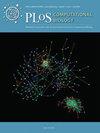在存在噪声的情况下校准降维超参数
IF 3.8
2区 生物学
Q1 BIOCHEMICAL RESEARCH METHODS
引用次数: 0
摘要
降维工具的目标是构建高维数据的低维表示。使用这些工具有多种原因,如减少噪音、可视化和降低计算成本。然而,在其他建模问题中讨论过的一个基本问题在降维过程中往往被忽视--过度拟合。在其他建模问题中,会采用特征选择、交叉验证和正则化等技术来对抗过拟合,但在应用降维时却很少采取这样的预防措施。之前应用的两种最流行的非线性降维方法--t-SNE 和 UMAP,在评估性能时没有将数据视为信号和噪声的组合。这些方法通常是为了捕捉整个数据,而不仅仅是信号。在本文中,我们证明了在校准超参数时承认噪声的重要性,并提出了一个能让用户这样做的框架。在应用 t-SNE 和 UMAP 时,我们利用这一框架来探讨超参数校准在过度拟合数据中的作用。更具体地说,我们发现之前推荐的复杂度和 n_neighbors 值太小,会过度拟合噪声。我们还提供了一个工作流程,其他人可以用来在有噪声的情况下校准超参数。本文章由计算机程序翻译,如有差异,请以英文原文为准。
Calibrating dimension reduction hyperparameters in the presence of noise
The goal of dimension reduction tools is to construct a low-dimensional representation of high-dimensional data. These tools are employed for a variety of reasons such as noise reduction, visualization, and to lower computational costs. However, there is a fundamental issue that is discussed in other modeling problems that is often overlooked in dimension reduction—overfitting. In the context of other modeling problems, techniques such as feature-selection, cross-validation, and regularization are employed to combat overfitting, but rarely are such precautions taken when applying dimension reduction. Prior applications of the two most popular non-linear dimension reduction methods, t-SNE and UMAP, fail to acknowledge data as a combination of signal and noise when assessing performance. These methods are typically calibrated to capture the entirety of the data, not just the signal. In this paper, we demonstrate the importance of acknowledging noise when calibrating hyperparameters and present a framework that enables users to do so. We use this framework to explore the role hyperparameter calibration plays in overfitting the data when applying t-SNE and UMAP. More specifically, we show previously recommended values for perplexity and n_neighbors are too small and overfit the noise. We also provide a workflow others may use to calibrate hyperparameters in the presence of noise.
求助全文
通过发布文献求助,成功后即可免费获取论文全文。
去求助
来源期刊

PLoS Computational Biology
BIOCHEMICAL RESEARCH METHODS-MATHEMATICAL & COMPUTATIONAL BIOLOGY
CiteScore
7.10
自引率
4.70%
发文量
820
审稿时长
2.5 months
期刊介绍:
PLOS Computational Biology features works of exceptional significance that further our understanding of living systems at all scales—from molecules and cells, to patient populations and ecosystems—through the application of computational methods. Readers include life and computational scientists, who can take the important findings presented here to the next level of discovery.
Research articles must be declared as belonging to a relevant section. More information about the sections can be found in the submission guidelines.
Research articles should model aspects of biological systems, demonstrate both methodological and scientific novelty, and provide profound new biological insights.
Generally, reliability and significance of biological discovery through computation should be validated and enriched by experimental studies. Inclusion of experimental validation is not required for publication, but should be referenced where possible. Inclusion of experimental validation of a modest biological discovery through computation does not render a manuscript suitable for PLOS Computational Biology.
Research articles specifically designated as Methods papers should describe outstanding methods of exceptional importance that have been shown, or have the promise to provide new biological insights. The method must already be widely adopted, or have the promise of wide adoption by a broad community of users. Enhancements to existing published methods will only be considered if those enhancements bring exceptional new capabilities.
 求助内容:
求助内容: 应助结果提醒方式:
应助结果提醒方式:


